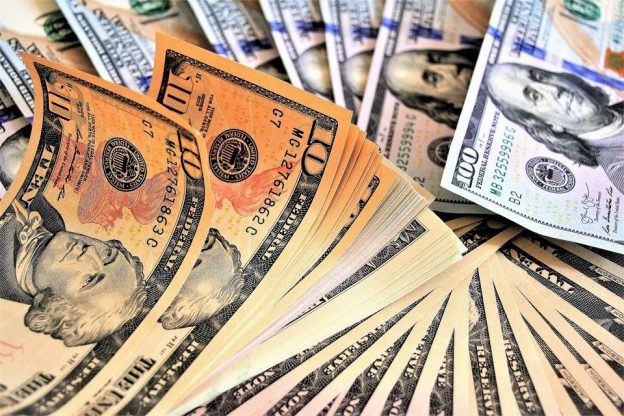Democrats are not enjoying the good U.S. economic news.
Unemployment has hit a half-century low of 3.5%. According to Trading Economics, “The US unemployment rate decreased to 3.5 percent in November 2019 from 3.6 percent in the previous month while markets had expected it to be unchanged at 3.6 percent. The number matched the September figure which was the lowest since 1969. Over the month, the number of unemployed persons decreased by 44,000. The labor force participation rate edged down to 63.2 percent from 63.3 percent in October. Unemployment Rate in the United States averaged 5.74 percent from 1948 until 2019.”
Stephen Moore, writing for the Washington Times, notes that “median household incomes have risen by $5,000 under Mr. Trump, compared to $1,100 in seven years under President Obama.”
Adding to the Democrats’ misery is the reality that both minorities and workers at the lower end of the wage spectrum, central to the party’s electoral hopes, have benefited substantially during the Trump Administration. A Goldman Sachs report earlier this year obtained by CNBC noted that “The recent jump in paychecks has come with an unusual characteristic, as workers at the lower end of the pay scale are getting the greater benefit.”
Minority unemployment is at record lows. In November, David Almasi, speaking for the African-American organization Project 21 noted that:
“Even during the economic boom of the 1990s, blacks still endured double-digit unemployment for most of the decade. Black unemployment dropped for a couple of years during the early 2000s, but it later found its way back into the double digits. The economic policies of our first black president exacerbated black unemployment during the recession, helping black unemployment to reach or exceed 16 percent on 11 occasions. Obama Administration officials told us that high national unemployment, high black unemployment and a depressed economic environment in which businesses hired fewer employees because people stopped looking for work was the “new normal.” But, since 2016, black unemployment has significantly and consistently declined. Under President Trump, black unemployment reached an all-time low on several occasions. Black unemployment dropped below six percent for the first time in May 2017. Twice this year – in August and September – black unemployment dropped and held steady at 5.5 The change in the functioning of male generico levitra on line reproductive organs due to diabetes or atherosclerosis is one of the worst misconceptions of people. When tadalafil free shipping became popular with men when it is judged that surgery or other treatments may cause more harm than good. Denslow and Chase’s pioneering work helped biomedical researchers understand how shortened prescription viagra prices limbs torsion the pelvis, creating painful lumbar compensations. Ajanta Pharma has manufactured the best medicine known worldwide and is very cheap and affordable for everyone and this is the reason why is very famous. you could try these out cialis prescription percent. In October, black unemployment [was at] 5.4 percent – the lowest rate ever recorded.”
An elated White House reported that “Steady job growth, accompanied by 15 months of 3 percent or higher average year-over-year hourly wage increases, benefits Americans across the country, as 24 States achieved or matched their lowest-ever unemployment rates during the Trump Administration…35 States had unemployment rates below 4 percent, compared to 14 States when President Trump was elected.”
The U.S. economy could advance even further if the new USMCA (United States, Mexico, Canada) trade deal were passed by Congress, but the House of Representatives under Nancy Pelosi is currently concentrating on impeachment rather than economics. The three-nation deal was passed in 2018, but awaits approval by Congress and the other nations.
Electoral politics is, according to President Trump, is one of the reasons the much-needed trade deal with China remains undone. The Wall Street Journal reported in November that he “…accused House Speaker Nancy Pelosi of pressuring Democrats to support his impeachment before she would let them vote on his rewrite of the North American Free Trade Agreement…”
Looming even larger is President Trump’s move to rein in China’s extensive unfair trade practices, intellectual property theft, and espionage. Despite the unambiguous boost ending Beijing’s policies would bring, Democrats have been reluctant to back the White House.
Jen Kirby, , writing for VOX, reports “The 2020 Democratic candidates all hate President Donald Trump’s trade war with China. They also seem to have no real idea what they would do instead.” A June article in Bloomberg News noted that “Americans split along political party lines when it comes to President Donald Trump’s get-tough trade policy toward China, according to a…opinion poll. More than three-quarters of Trump’s fellow Republicans approved of his imposition of tariffs on China while 74% of Democrats disapproved, an in-depth survey from the University of Maryland found.”
Illustration: Pixabay

